Biographies of selected Bonitz family members
These biography pages were mostly derived from old writings in German.
I will continue to translate or at least summarize them.
Sorry for any incomplete sections in English.
If you would like to contribute any english biographies, or if you can support me in translating, any feedback will be appreciated.
|
was born at Langensalza in Thuringia, Germany on the 29th of July 1814. | 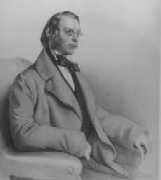 |
|
In 1849 he became professor at the university of Vienna, where he installed a faculty for the education of future teachers.
In cooperation with F. Exner, he laid out a concept for the basic reorganization of the Austrian high school educational system, introducing mathematics and natural science into the schools
of Austria, and substituting the wide reading of classical authors for the prevalent practice of speaking and writing Latin.
In 1854 Hermann Bonitz became member of the imperial academy of Vienna, 1864 member of the council of education.
| 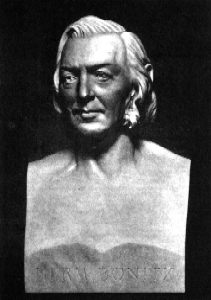 |
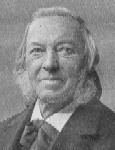 |
Hermann Bonitz married Bertha Maria Semmel of Gera in 1843. As a widow she stayed in Berlin where she reached the age of 97 years.
Three of their children were born in Stettin, including their son Eduard Friedrich (born 1844), who was magistrate of a Berlin county court from 1879 until his early death in 1889. |
The Bonitz Brothers of Goldsboro, NC
Julius A. (1841-1891) and J. H. William (1839-1913) Bonitz were born in the Kingdom of Hanover (Germany after 1870) and were the sons of Johann and Dorothea Louise Schalitz Bonitz. They came from a long line of mining engineers.
William Bonitz came to the United States and for a time lived in Washington, D.C. He came to Goldsboro in 1859 and purchased a 550 acre tract of land on Stoney Creek, east of Goldsboro. In 1862, he married Mary Elise Stegner, and they had nine children. During the War, William Bonitz worked with his brother, Julius, on his newspaper called at first "Rough Notes" and later the "Goldsboro Messenger."
At the same time they manufactured and printed official envelopes for the Confederacy. William's health was not good enough for military service, but in 1865, he volunteered and fought at the Battle of Bentonville. From 1867 to 1879, he operated the elegant Bonitz Hotel on the corner of Chestnut and Center Streets in Goldsboro, but in 1879, he sold the hotel. In 1889 he moved to Wilmington and opened the Bonitz Hotel on the north side of Market Street between Front and Market streets.
William Bonitz died in Wilmington and left a number of children among whom was Henry Emil Bonitz, an eminent architect.
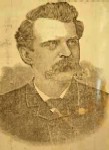
|
Julius Bonitz came to the United States in 1857 and to Goldsboro in 1861. Goldsboro had a population of one thousand persons at that time including slaves. Young Julius enlisted in the Goldsboro Rifles and served in the Confederate Army for three years. |
He was chairman of the Wayne County Board of Education and a trustee of the North Carolina State Hospital at Goldsboro. In 1881 Julius Bonitz built the Messenger Opera House in Goldsboro on the north east corner of Chestnut and Center Streets. Many traveling musical and dramatic groups played at the opera house. In fact, the famous Sousa Band played there as well as the Ziegfield Musicals, and Billie Burke. (Thanks to the USGenWeb archives for this text.)
| 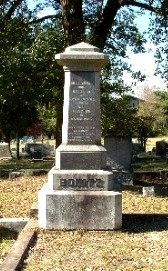 |
Last update of this page: January 15, 2014
© 2000-2024 by Jochen Bonitz